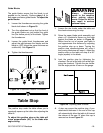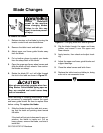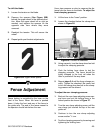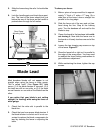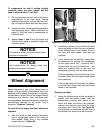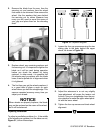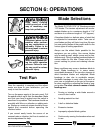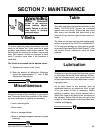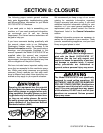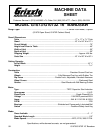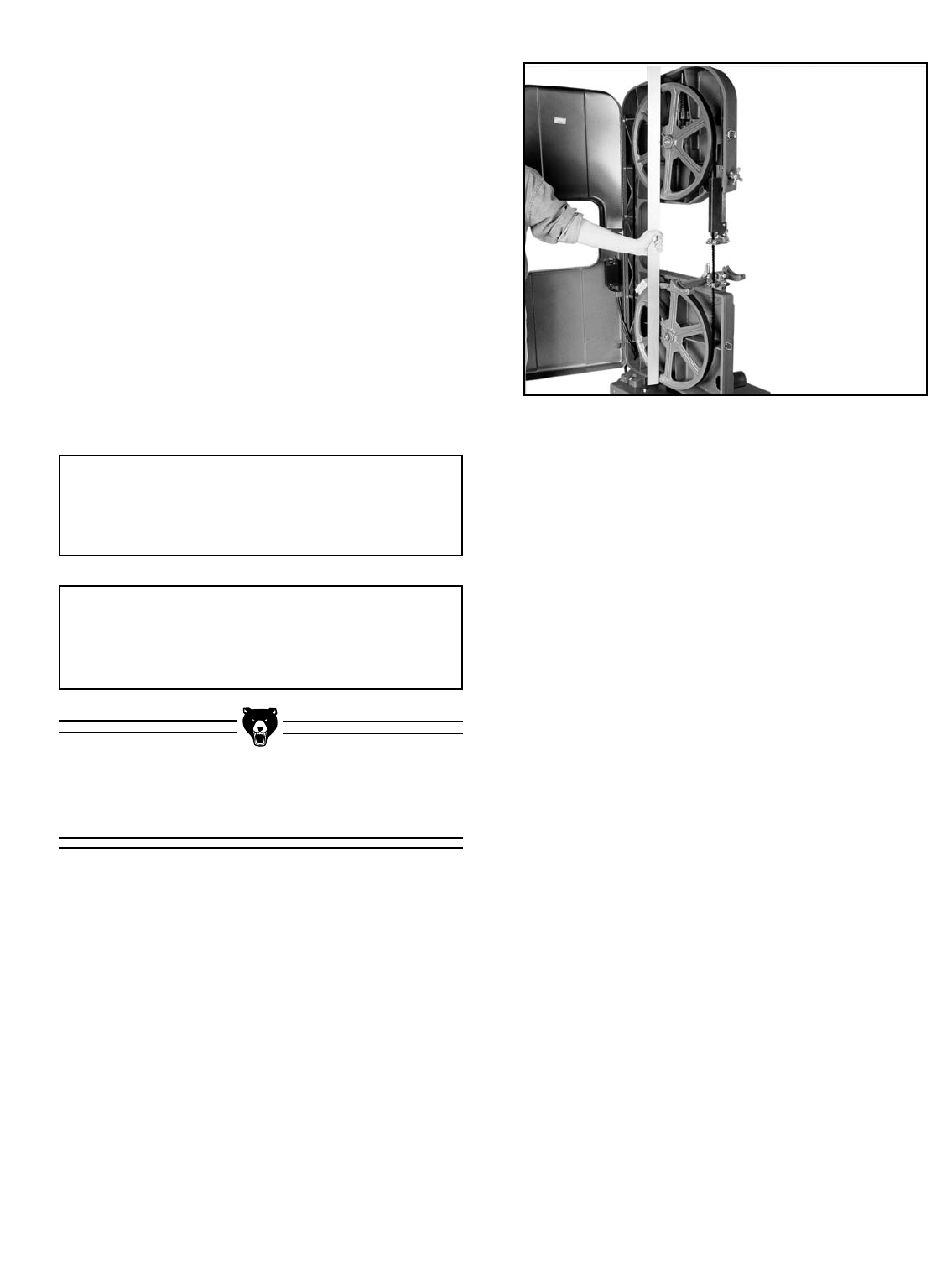
G1073/G1073Z 16'' Bandsaw -25-
Figure 29. Holding a straightedge across both wheels.
Wheel Alignment
Wheel alignment is one of the easiest ways to
ensure you get optimal performance from your
bandsaw. When wheels are aligned, or coplanar,
the bandsaw is more likely to cut straight without
wandering; and vibration, heat, and blade wear
are considerably decreased because the blade is
automatically balanced on the wheel. This is
known as “Coplanar Tracking.”
To verify if the the upper and lower wheels are
coplanar:
1. With the blade on and properly tensioned,
hold a straightedge close to the center of
both wheels. Make sure it fully extends
across them as in Figure 29.
To compensate for lead if making straight
crosscuts using the miter gauge, you will
need to shift the table. To do this:
1. On a scrap piece of wood, mark a line that is
perpendicular to the front edge. Starting
where the line begins, cut the board by push-
ing it through the blade with the miter gauge.
2. Loosen the table mounting bolts according to
the instructions about “Table Parallelism” on
page 20. Shift the table to compensate for
the blade lead.
3. Repeat steps 1 and 2 until the blade cuts
straight when wood is pushed through with
the miter gauge.
NOTICE
Lead adjustments will change when new
blades are mounted in the saw.
NOTICE
If the table is shifted, the fence will be affect-
ed since it is attached.
2. A perfectly coplanar set of wheels will allow
the straightedge to touch the top and bottom
of the outside rims on each wheel. If this is
the case with your wheels, then they are
coplanar.
3. If your wheels are not coplanar, check them
for adjustment by placing the straightedge
on the upper wheel first – ensuring that it
touches both the top and bottom rim – and
adjust the tracking knob to see how the
straightedge lines up with the lower wheel.
If the straightedge only touches the top rim of
the lower wheel, then the upper wheel needs
to be shimmed.
If the straightedge only touches the bottom
rim of the lower wheel, then the lower wheel
needs to be shimmed.
Shimming a wheel.
1. Adjust the tracking knob so the top wheel is
parallel with the bottom wheel. With the
straightedge touching both points of the
wheel that does not need to be adjusted,
measure the distance away from the incor-
rect wheel with a fine ruler. See Figure 30.
The distance you measured with the ruler is
the distance the wheel must be corrected.





